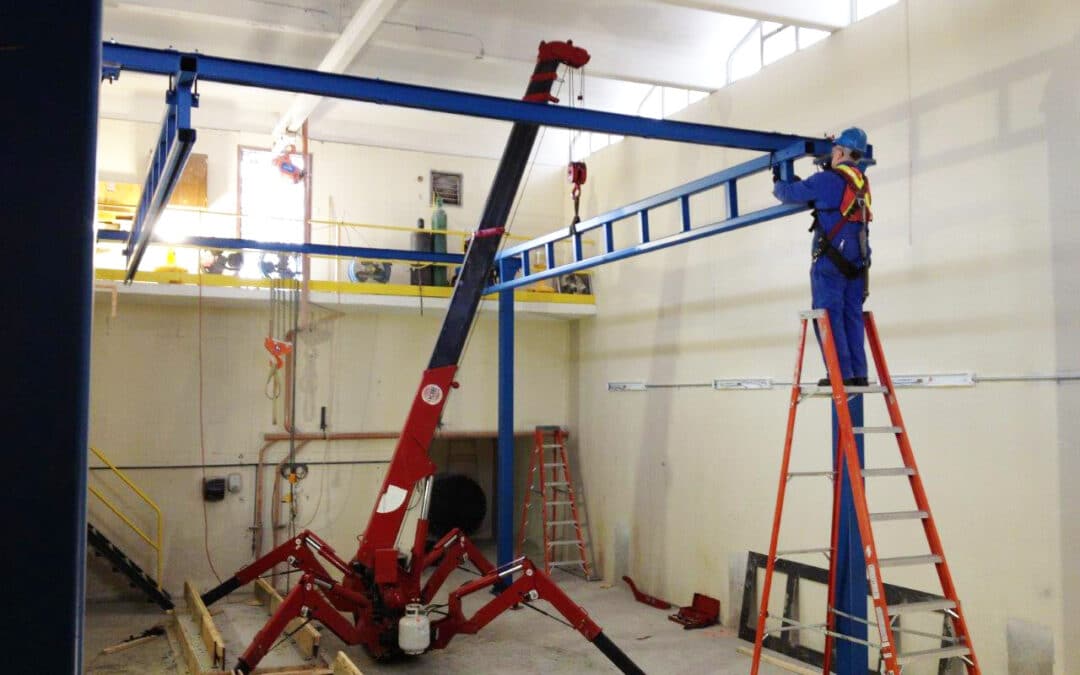“You’ve heard of building a ship in a bottle? Well this was building a crane in a cement box!” – KEL Project Coordinator

When it comes to installing a customers crane, we at Kristian Electric are the best at what we do. Even though each crane order is unique, the steps to manufacture and install each piece can be somewhat routine. However, in January of 2013, we were tasked with a crane installation that would have made MacGyver proud.
A construction company approached us to install a Gorbel workstation crane in a city pump station. The crane would be used for maintenance and repairs on the pumps, motors and valves in the lower level of the water lift station. Easy peezy right? Wrong.
The room the crane needed to be installed in was no more than a few feet larger than the workstation crane itself, and with dimensions of 20’ – 5″ headers and 43’ – 6″ long runways, this left little room for anything else. (Fig.1) Another obstacle to consider was building access, as the largest entrance to the building was a double man door.
So not only did KEL technicians need to ensure safety for themselves, working in such a confined environment but for the crane components as well, all while completing the job in a timely manner. “We had a number of obstacles to overcome before we even started that required a lot of forethought and measuring.” says the Kristian Electric project coordinator on the job.
After putting many heads together, a plan was formed. To begin with, the general contractor, removed all of the old equipment and piping from the pump station. Then, with the use of a KEL rental electric chain hoist installed on the existing monorail (Fig.2), a special spreader beam was engineered and fabricated to lift and lower a spyder crane, with only 2″ of clearance, through the man door and into the room. (Fig.3)
Meanwhile, a picker truck was situated outside the building. (Fig.6 The picker, in conjunction with the spyder crane were used to feed one of the headers through a window from outside as it needed to be installed above the monorail beam.
Then KEL techs went to work constructing the workstation crane in their little tin can using the monorail hoist to lower components into the room (Fig.5) and the spyder crane to hoist them into place. (Fig.6,7) Once completed, the spyder crane was disassembled and hoisted out of the room using the monorail. (Fig.8) The chain hoist was removed and voila!
All said and done, the job took a little over a week. Everything went as expected and our customer was very pleased. So, just like MacGyver always said; ‘any problem can be solved, with a little ingenuity’ (and a little KEL).

